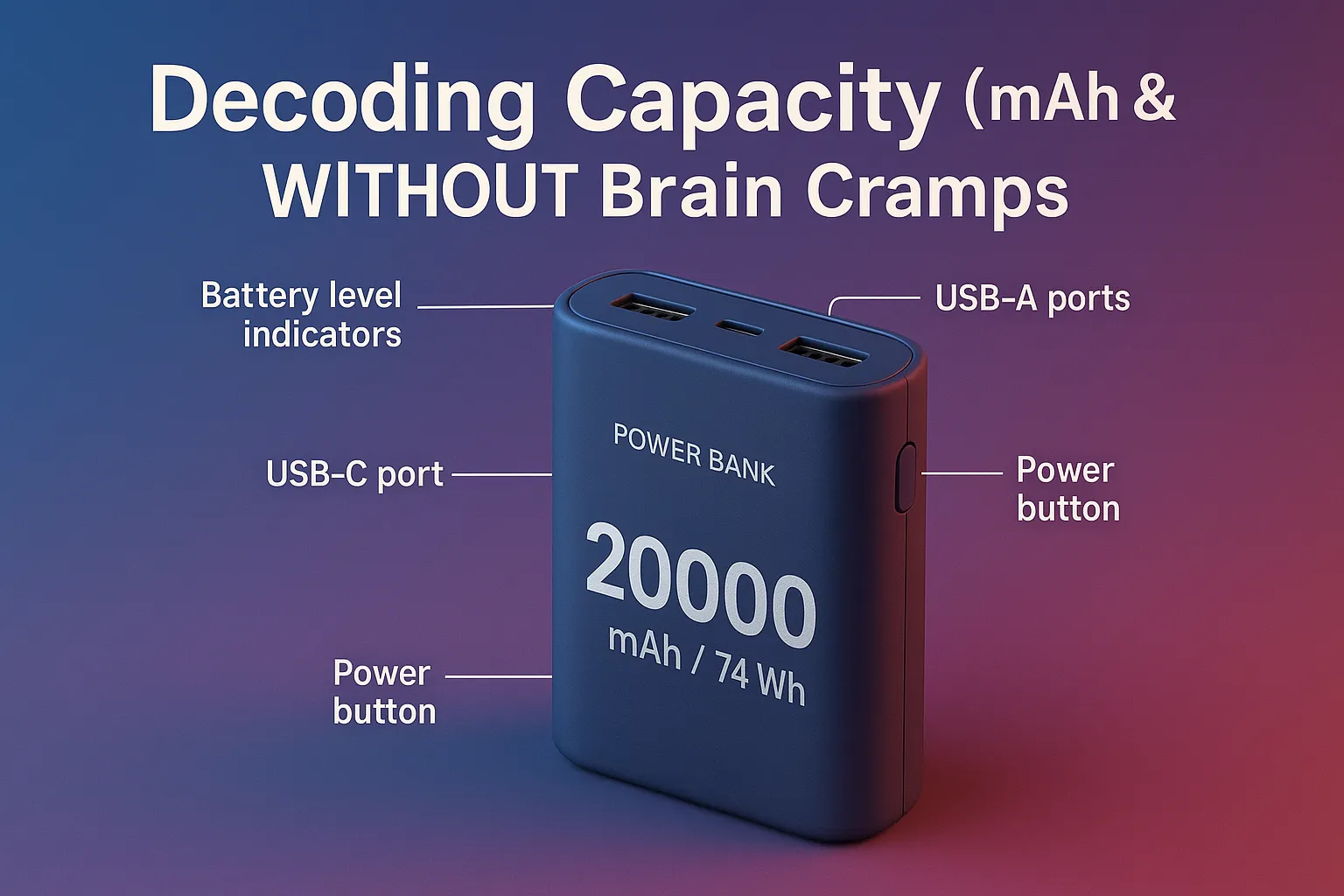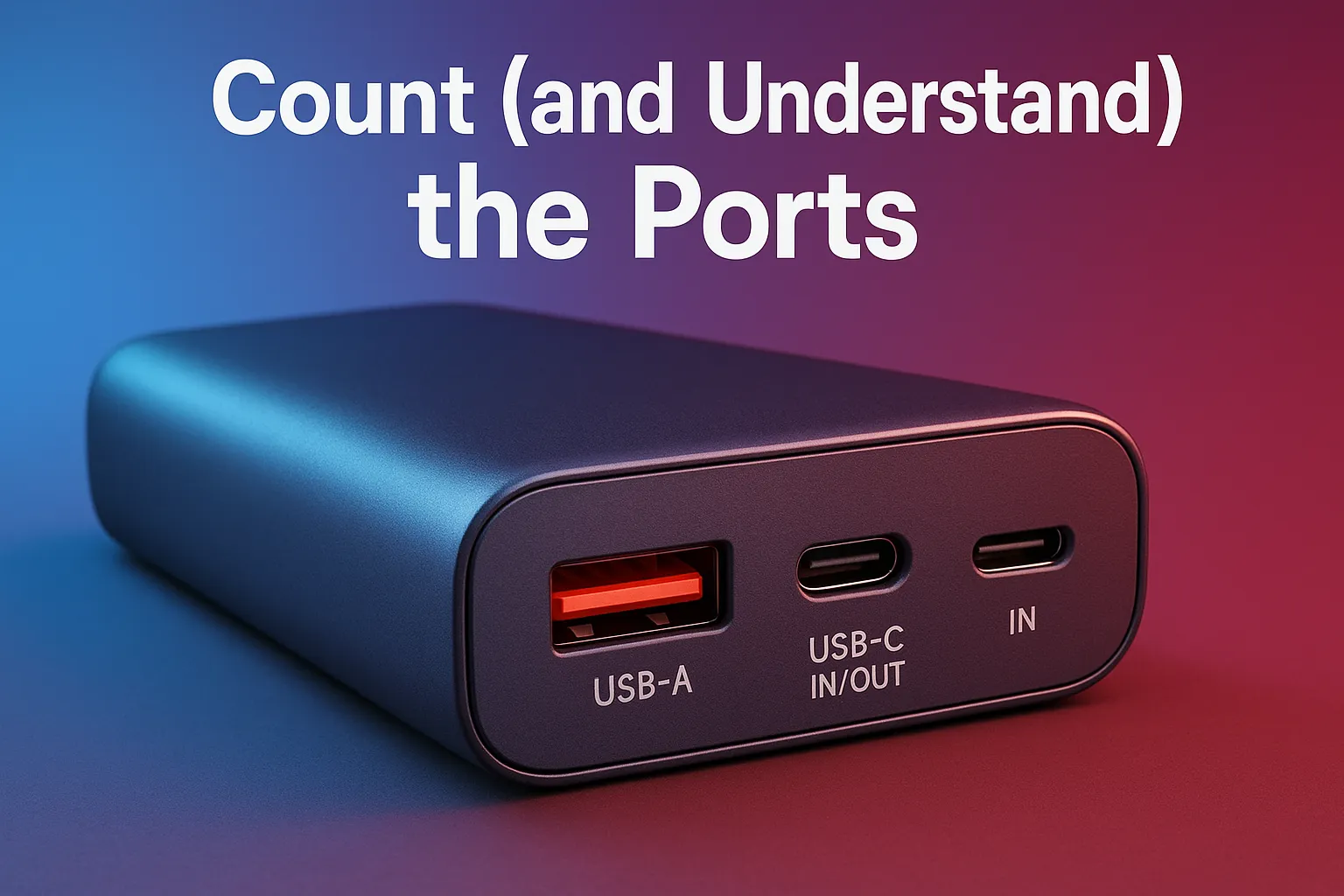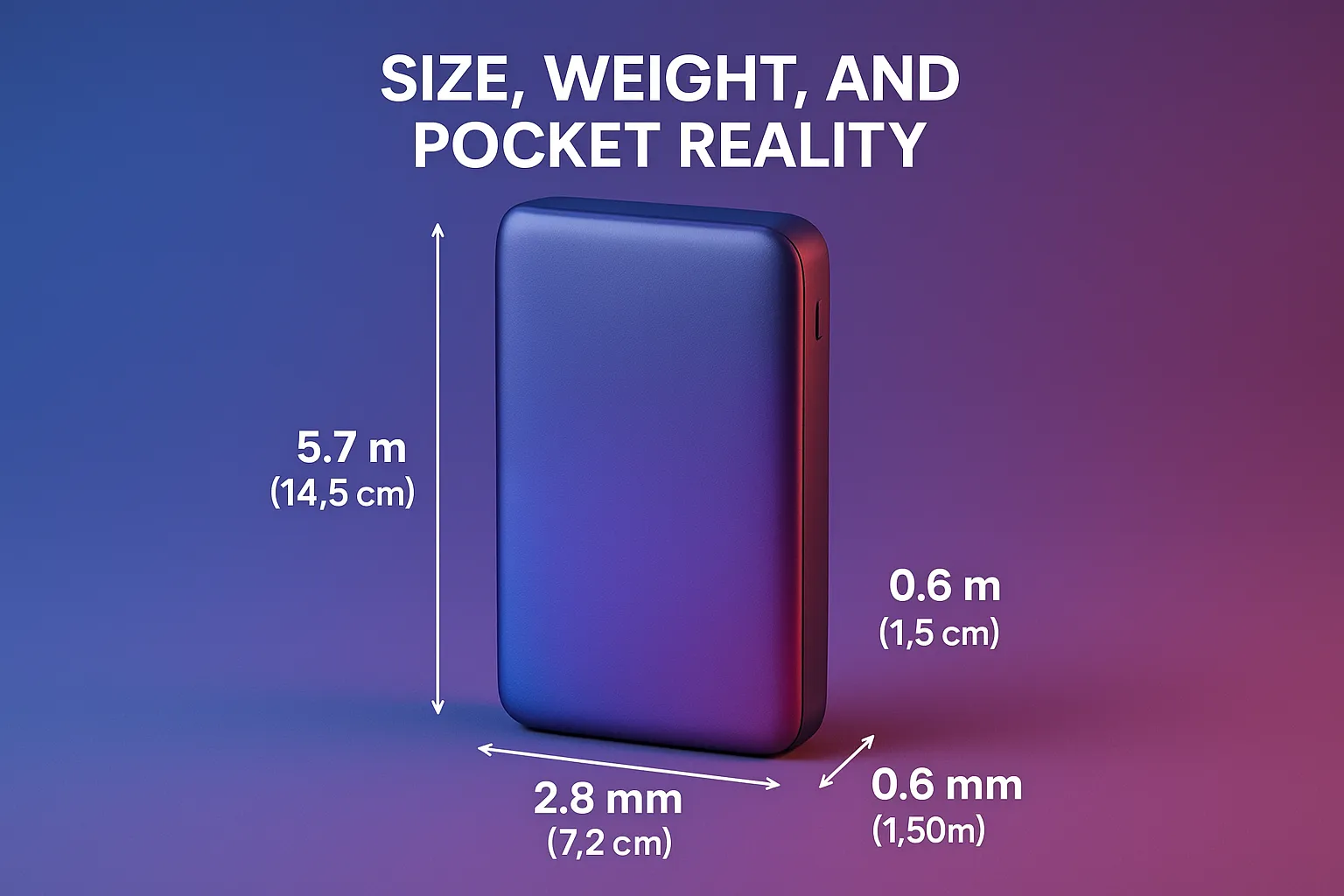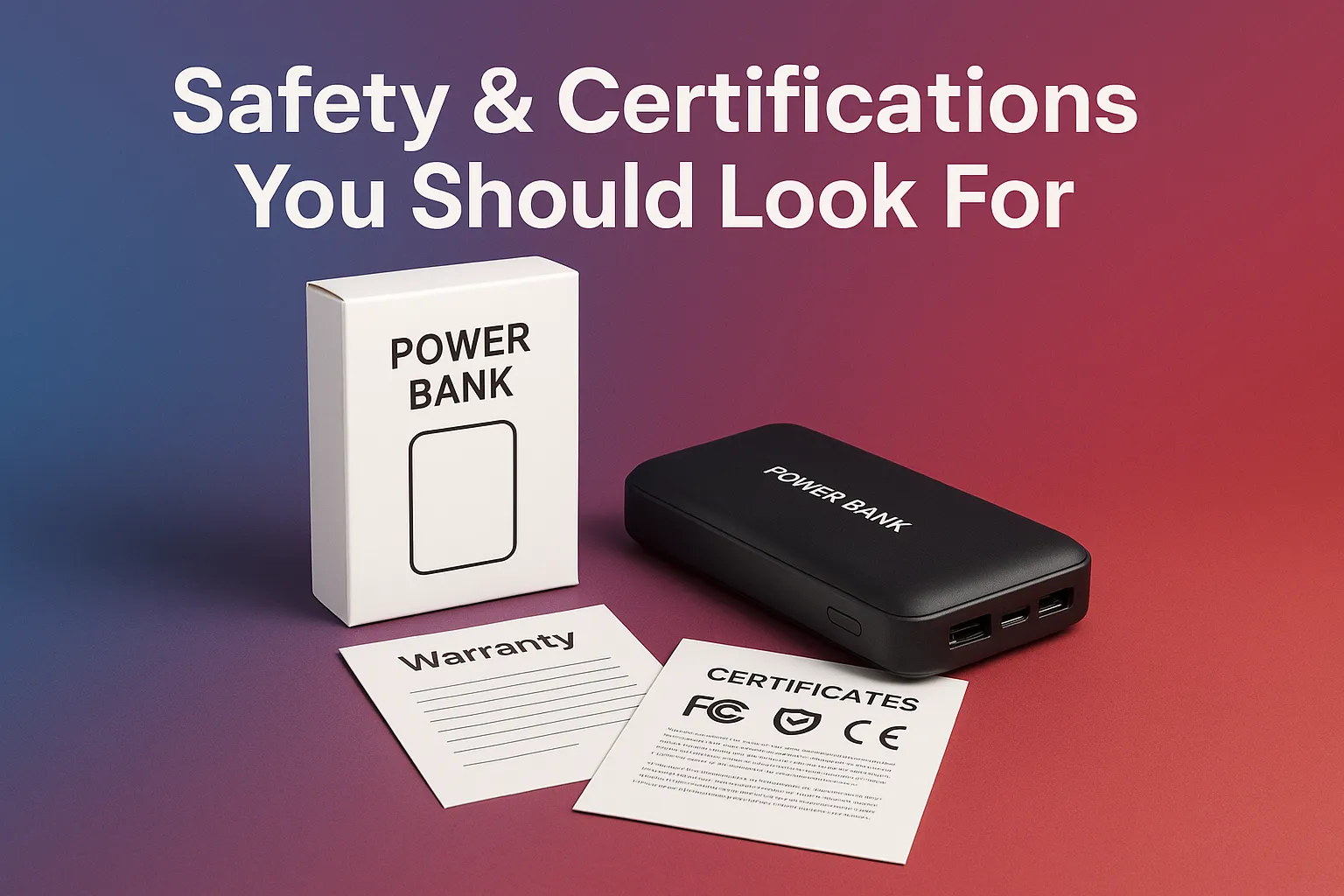A few months ago, while camping on a windswept coast in Zambales, I watched my friends toast marshmallows over a bonfire — and then, unintentionally, roast their only power bank beside the flames. One loud pop later, we had half-charged phones, zero navigation back to town, and a painful reminder that not all bricks are built alike.
If you’ve ever stared at the dizzying wall of specs online and wondered, “Ano ba talaga ang pipiliin ko?” this guide is for you. We’ll move past buzzwords and marketing glitter to match the right power bank to the life you live — whether that’s commuting two hours on EDSA, café-hopping with a laptop, or filming drone shots off-grid.

Editor
Lloyd Kelly Miralles chevron_right
Table of Contents
Start With Your Personal “Why”

Before diving into milliamp-hours and wattage charts, ask yourself one question: What’s the worst-case battery scenario you want to avoid?
- Daily commuter panic (phone hits 5 % before you reach home)
- Business-trip blues (tablet dies mid-presentation)
- Digital-nomad life (laptop + camera + router on a beach in Siargao)
- Disaster preparedness (typhoon season brownouts)
Write down the devices you’ll charge and how many full refills you genuinely need. Everything else—capacity, ports, price—flows from that list.
Decoding Capacity (mAh & Wh) Without Brain Cramps

You’ve already met the mAh versus Wh twist in our previous article, so here’s the capsule version you can remember while browsing on your phone:
|
Printed Size |
Approx. Wh* |
Real-World 5 000 mAh Phone Charges† |
Who It’s For |
|
10 000 mAh |
~37 Wh |
1 – 1.5 |
Day-trip commuter, light social media |
|
20 000 mAh |
~74 Wh |
2.5 – 3 |
Weekend traveller, heavy phone user |
|
26 800 mAh |
~99 Wh (airline max w/o forms) |
3.5 – 4 |
Frequent flyer, phone + earbuds |
|
30 000 mAh |
~111 Wh (paperwork!) |
4 – 5 |
Remote workers, light laptop top-ups |
|
40 000 mAh+ |
148 Wh+ (cargo only) |
6+ |
Off-grid adventures, emergency kits |
*Using the “divide by 27” rule (mAh ÷ 27 ≈ Wh).
†Assumes 25 % conversion loss.
Quick pick: If you just need to survive a long Grab ride and a workday, 10 000 mAh is plenty. Planning a whole-day photo shoot? Go 20 000 mAh or higher.
Match Output Power to Your Largest Device

A 30 000 mAh brick that maxes out at 12 W will crawl when charging a tablet or Nintendo Switch. Flip the box and look for USB-C PD figures:
- 18 W – zippy phone top-ups, fine for AirPods
- 30 W – iPads, Steam Deck in sleep mode
- 45–65 W – ultrabooks, 13-inch MacBook Pro, DSLR dummy batteries
- 100 W – 14-inch laptops at full throttle
- 140 W PD 3.1 – hungry 16-inch MacBook Pro, 2025 gaming rigs
Rule of thumb: Buy a bank that can output at least 80 % of your laptop’s original wall charger rating. Lower, and you’ll watch the battery icon drop while you edit videos.
Count (and Understand) the Ports

Paragraph style here so we keep flow:
- Legacy USB-A ports are perfect for friends’ older cables and low-power accessories.
- USB-C In/Out is the modern must-have. One high-wattage C port beats three mediocre A ports combined.
- Dual USB-C banks often split their headline wattage between ports when both are in use — e.g., 100 W solo becomes 65 W + 30 W. Check the fine-print table.
Pass-through charging lets you top up devices while the bank itself charges. Great for hostel rooms with a single socket, but expect slower speeds.
Size, Weight, and Pocket Reality

Capacity and wattage rise; so do grams. Toss the power bank in your everyday bag and ask yourself:
- Is it heavier than my phone? Anything past 400 g feels like hauling an extra brick.
- Does it fit airline rules? Under 100 Wh glides through security.
- Will I really carry it daily? The “best” spec means nothing if it’s left on the desk at home.
Pro trick: Slip a notebook or Kindle in the same pouch; if the combo feels like a dumbbell, scale down.
Safety & Certifications You Should Look For

- Over-voltage, over-current, over-temperature protection (usually printed as “OVP, OCP, OTP”).
- UN 38.3 compliance (mandatory for shipping).
- CE/FCC/RoHS labels show basic global testing.
- NTC sticker for locally certified units (faster warranty claims within PH).
- E-marked cable included or buy one separately for 100 W+ needs.
No visible certifications? That ₱299 deal might cost you a scorched backpack.
Bonus Features Worth (or Not Worth) Your Money
|
Feature |
When It’s Gold |
When It’s Glitter |
|
Digital wattmeter display |
You juggle camera gear and laptops, want exact numbers. |
Casual phone-only users won’t check it. |
|
Built-in cables |
Great for minimalists who lose wires. |
Cables often short and are pricey to replace. |
|
Wireless charging pad |
Midnight bedside use, fewer cables. |
Adds bulk; efficiency drops ~30 %. |
|
Kickstand & LED floodlight |
Perfect for typhoon-season blackouts or camping. |
Daily commuters never unfold it. |
The 60-Second Shopping Checklist
(Yes, here’s your SEO-friendly bullet blast.)
- ✔ Capacity in Wh clearly stated (airline-proof).
- ✔ USB-C PD wattage ≥ your hungriest device × 0.8.
- ✔ E-marked cable rated for that wattage.
- ✔ At least one extra port for a friend or earbuds.
- ✔ Weight under 400 g if you’ll carry it daily.
- ✔ OVP/OCP/OTP protection printed.
- ✔ Brand warranty center in PH (no three-month cross-border wait).
- ✔ Reviews confirm honest capacity (check teardown forums or power-meter screenshots).
Screenshot that list; next flash sale, you’ll be ready.
Putting It All Together: Three Example Profiles
- The Everyday Commuter
- Gear: Phone (5 000 mAh), earbuds.
- Pick: 10 000 mAh, 22 W PD bank with built-in USB-C cable.
- Why: One-day cushion, pocket weight ≈ power bar snack.
- The Mobile Creator
- Gear: 14-inch laptop (65 W), mirrorless camera batteries, gimbal.
- Pick: 26 800 mAh, 100 W USB-C PD bank + spare 30 W port.
- Why: Two hours laptop editing by the beach, simultaneous camera battery charger.
- The Emergency Prepper
- Gear: Family’s phones, 5 V router, USB desk fan.
- Pick: 40 000 mAh rugged bank with LED floodlight, dual 30 W outputs.
Why: 8–10 phone refills during a multi-day brownout, plus lighting.
Conclusion
Choosing a power bank is like picking a travel companion: the best one carries just enough, moves at your pace, and doesn’t add drama. For top recommendations tailored to various needs, explore our Best Power Banks in the Philippines list. Nail down why you need it, match capacity to that mission, check wattage against your biggest gadget, and demand honest safety labels. Do that, and you’ll never find yourself roasting a mystery brick by the fire—or stranded on a rain-soaked commute with 4 % battery ever again.
